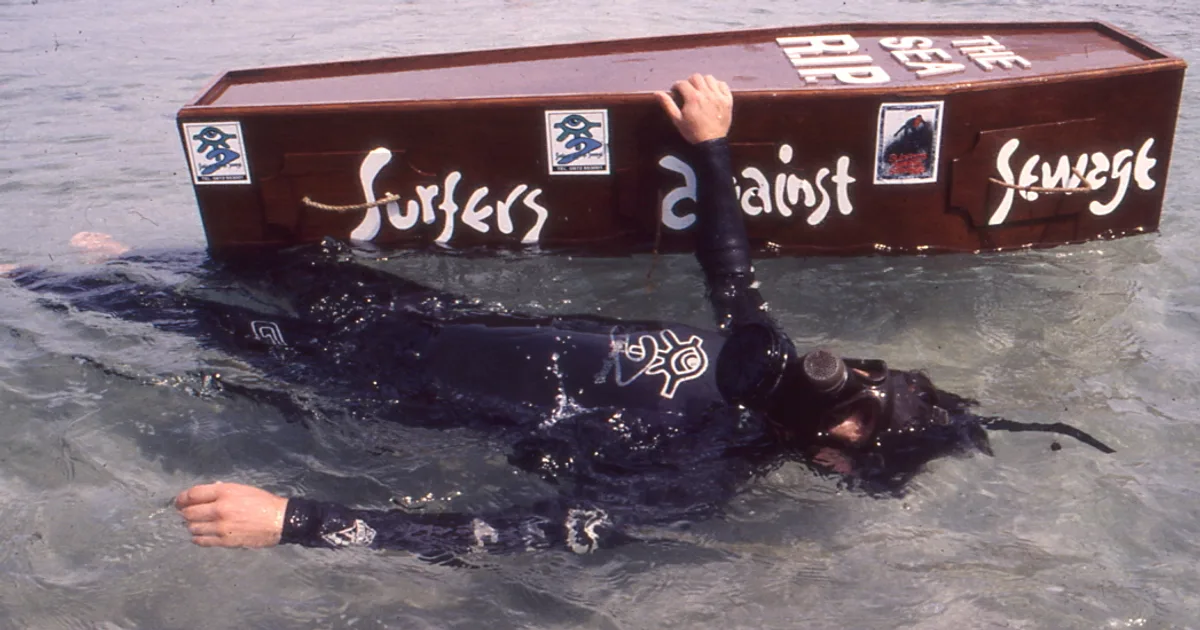

Its curator, Dr. Sam Bleakley, was keen to tell the story of “100 years in 100 boards”, he says. The earliest, he shows me, is a wooden “coffinboard”, made by local coffin makers in the 1920s – which was ridden prone (belly down). As the decades progress, the boards get longer and shinier – as does the sheen of surf’s image. By the ’60s, headband-wearing wave-riders were grinning from the pages of surf magazines. Vintage posters with slogans like “Get your surf on!” cover the walls. Wetsuits become more skin tight. By the end of the decade, the sport was attracting thousands to the shores of Cornwall, which was becoming what the exhibition dubs the “California of the UK”.
Bleakley, a European longboard champion and senior lecturer in cultural tourism at Falmouth University, was born and bred with the sea. He views surfing as a less confrontational way to bring light to some of our most urgent crises: “I like the way that the video clips interlink with the physical objects, to the narrative, to the smells, and the noises, so I really wanted it to be something that was deep enough to celebrate the people who’ve really done special things, but to also plant the seeds to think more sustainably, to be more ethical without being dogmatic,” he says.
This tension lies at the heart of surfing – much of the exhibition celebrates the “care-free spirit” of surfing, the idea, as Bleakley puts, we need to “reconnect with nature” and “go to the coast and play because we live a busy life”. But it was precisely this free-spirited image that gave the sport its edge – seen as a lifestyle for Californians, barefoot drifters, and countercultural creatives riding against the tide of convention. In the late ’60s, surfing was banned on some Cornish beaches, thought to attract the “wrong kind of tourist”. “It’s really important to recognise the tensions that activities create,” says Bleakley. “Some councils banned it because they thought it was bringing a bad element to the town, that it was dangerous. Those tensions led to the more politicised side of surfing.”







